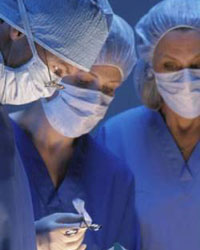Contributed by Pastor Seth Moland-Kovash
All Saints Lutheran Church
Palatine, IL
Warm-up Question: How easy do you find it to forgive a friend when something bad happens that is clearly their fault?
 Finding fault and placing blame are things that all people do. Somehow it just seems to make us feel better when we can place the blame for someone on someone’s shoulders. Of course, it only serves to make us feel comfortable if we can place the blame on someone else’s shoulders. There are times when placing blame isn’t just a matter of words, but of serious consequences: sometimes thousands or millions of dollars, or other punishments.
Finding fault and placing blame are things that all people do. Somehow it just seems to make us feel better when we can place the blame for someone on someone’s shoulders. Of course, it only serves to make us feel comfortable if we can place the blame on someone else’s shoulders. There are times when placing blame isn’t just a matter of words, but of serious consequences: sometimes thousands or millions of dollars, or other punishments.
One way that this happens is through medical malpractice lawsuits. A doctor or hospital can be sued for malpractice if a mistake is made in treating a patient or something is overlooked that should have been seen or treated.
One current proposal that is part of the debate on the healthcare system as a whole is to limit the amount of money that could be awarded to patients or families in malpractice cases. Called “tort reform,” one proposal would limit the amount of money that people could win to $500,000 for punitive damages and $250,000 for “pain and suffering.” The Congressional Budget Office estimates that this change would save the government $54 billion over the next 10 years.
Some say that the legal awards need to be limited to be reasonable and to cut the costs that doctors have to pay for malpractice insurance. Others say that there is no amount of money that should be considered too great for the family of someone who has died because of malpractice.
Discussion Questions
- What do you think? Should there be a limit on the amount of money that a doctor or hospital would have to pay in a malpractice case?
- If someone you loved died because of a clear case of malpractice, how much money do you think would be a fair punishment?
Scripture Texts (NRSV) for Sunday, November 1, 2009 (All Saints Day).
(Text links are to oremus Bible Browser. Oremus Bible Browser is not affiliated with or supported by the Evangelical Lutheran Church in America. You can find the calendar of readings for Year B at Lectionary Readings.)
For lectionary humor and insight, check the weekly comic Agnus Day.
- Isaiah 25:6-9 or Wisdom 3:1-9
- Psalm 24 (5)
- Revelation 21:1-6a
- John 11:32-44
Gospel Reflection
Lazarus was dead. He was dead and buried and in the tomb. Jesus was late. The emergency message had been sent, but Jesus wasn’t there at the right time. Mary (Lazarus’ sister) said to Jesus, “Lord, if you had been here, my brother would not have died.” What do you think that she felt Jesus could have done? Whether she was right or not, she felt that Lazarus would not have died if Jesus had gotten there in time. Perhaps there was a hint of blame in her statement.
Where is God when it hurts? Why doesn’t God seem to be around to help me now like he helped all those people in the Bible? These are common questions that come to our minds when something bad happens. We want to know where God was and why God let that thing happen. In this story, we see that people even during the Bible times had the same experiences. Mary wanted to know why Jesus hadn’t gotten there in time. She wanted to know why this bad thing had to happen to her family. She was in pain.
And Jesus had healing for her pain. It wasn’t like anything she could have imagined. She imagined that, if Jesus had been able to get there before Lazarus died, then Jesus could have healed him. But once he was dead, Mary thought that was the end of the story.
Today, on All Saints Sunday, we remember again that death is not the end of the story for any of God’s saints. Your grandmothers and grandfathers, any of God’s children who have died, are alive again. Jesus is the way, the truth, and the life. Nothing can separate us from God’s love; not even death (Romans 8:37-39).
Discussion Questions
- Tell about a time you were in pain and wondered whether God was even there.
- Have you seen signs that God is there in painful times? What do those signs look like? (Hint: Look at the other people in the room… they may be the signs for you)
Activity Suggestion
Create an “All Saints” remembrance with your youth group. Bring a memento or photo that makes you think of someone who has died. Tell your friends about that person. Say, “I am thankful to God for ________ because __________.”
Closing Prayer
Good and gracious God, we thank you for all the saints you have given us who have shown us your love and your mercy. Help us to continue to live as your faithful children until the day when we are reunited with all your saints. Amen.
(Or use the prayer for the “Rememberance of the faithful departed” found on page 82 of Evangelical Lutheran Worship.)
